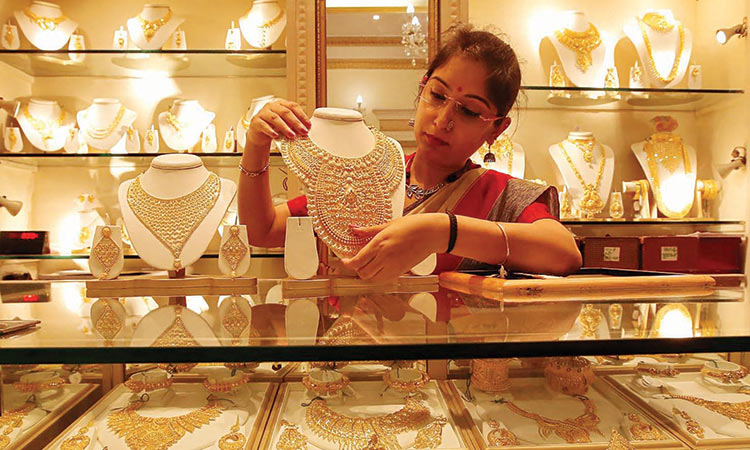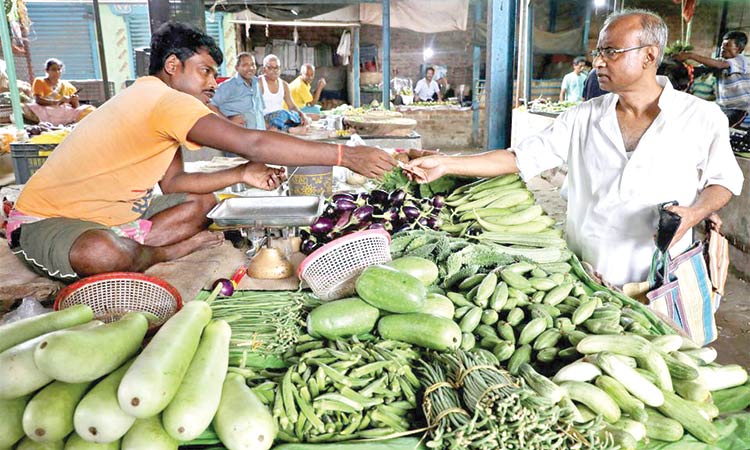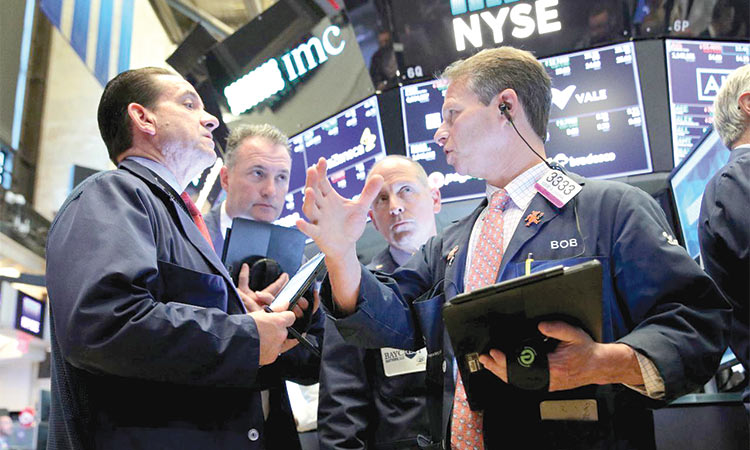Indian jewellers stay shut as lockdowns stifle gold demand

A saleswoman displays a gold necklace inside a jewellery showroom in Kolkata. File/Reuters
Physical gold demand in second-biggest bullion consumer India was negligible this week with most jewellery stores still shut by COVID-19 lockdowns, forcing dealers to offer steep discounts.
“Lockdowns are badly hitting the industry. Jewellers have stopped buying since retail demand is almost zero,” said Ashok Jain, proprietor of Mumbai-based gold wholesaler Chenaji Narsinghji.
Most states have imposed curbs as infections crossed 27 million, with over 3,000 people dying every day.
Dealers offered discounts of up to $10 an ounce, the highest since mid-September 2020, over official domestic prices - inclusive of 10.75% import and 3% sales levies - unchanged from last week.
A few states are considering easing restrictions from June 1 and that could help attract retail consumers, said a Mumbai-based bullion dealer with a gold importing bank.
On Friday, local gold futures traded around 48,400 rupees per 10 grams, having scaled a peak since Feb. 1 at 49,067 rupees earlier this week.
Chinese premiums were little changed at $7-$10 an ounce over benchmark spot gold prices.
Net gold imports into the country via Hong Kong jumped in April to a nearly three-year high, while Swiss exports to China also soared.
Imports could increase further with Beijing having given banks permission to import large amounts of gold.
Singapore premiums were little changed at $1.2-$1.7.
Brian Lan, managing director at dealer GoldSilver Central said the first few days of the week saw more selling due to higher prices although some high net worth individuals looked to buy up before prices move even higher.
Japanese dealers sold gold at anywhere between flat to an $0.30 premium.
Meanwhile, the Bangladesh Jewellers Association raised local prices this week, with the best quality gold priced at 73,483 taka ($871.89) per Bhori, or 11.664 grams.
The association said there was a supply shortage due to tax-related complexities on imports and a shutdown of international flights.
Gold challenges $1,900 again: Gold reversed course and turned positive on Friday, briefly tshowed US consumer prices surged in April and boosted bullion’s appeal as an inflation hedge.
Spot gold rose 0.2% to $1,898.86 per ounce by 10:14am, having earlier dipped as much as 0.8%. It is on course for its fourth straight weekly gain, up 1%.
US gold futures gained 0.2% to $1,901.60.
US consumer prices accelerated in the year to April, with a measure of underlying inflation blowing past the Federal Reserve’s 2% target.
“We saw slight uptick in the personal consumption data... All these things continue to support an underlying inflationary environment that is very favourable towards gold,” said David Meger, director of metals trading at High Ridge Futures.
The refusal of the Federal Reserve to reduce the pace of their bond buying programme or move higher on rates is also supportive for gold, although some psychological resistance at the $1,900 level and a stronger dollar is acting as a headwind, he added.
The dollar index was up 0.3%, making gold expensive for other currency holders, while US yields edged lower, translating into reduced opportunity cost of holding bullion.
Investors now eye the release of US President Joe Biden’s first full budget since taking office, with reports that he will seek $6 trillion in federal spending for the 2022 fiscal year.
The technicals are supportive, so any weakness in the prices will be looked as a buying opportunity, Eli Tesfaye, senior market strategist at RJO Futures said.
If the US economy recovers quickly and inflation continues to heat up, gold will be in ample demand, he added.
Elsewhere, silver fell 0.3% to $27.79 per ounce, platinum slipped 0.5%, to $1,174.09, while palladium rose 0.5% to $2,820.16.
Separately, Copper prices dipped on Friday as investors worried about demand from China and its authorities’ action to curb commodity prices, but losses were capped by the prospect of US spending.
Three-month copper on the London Metal Exchange slipped 0.2% to $10,201 a tonne by 1355 GMT, having surged by 31% so far this year and touched a record peak of $10,747.50 on May 10.
“It’s very confusing for the market because we have mixed messages. Investors are not chasing prices higher at current levels,” said Gianclaudio Torlizzi, partner at consultancy T-Commodity in Milan.
“On one hand, we have downside pressure on the market from China, but on the other hand, there’s a fixation by the market that the new Biden spending plan will be very big.”







